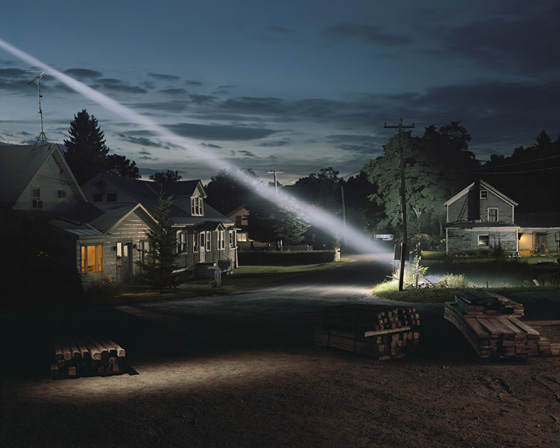Gregory Crewdson reputedly spent three years setting up and taking the elaborately staged, large-format photographs currently on display, under the collective title Beneath the Roses, at the White Cube Gallery. There is no catalogue to the exhibition, only a pamphlet entitled “Production Notes”, which reveals that the pictures in question were taken “on location” in the small towns, variously, of Adams, North Adams and Pittsfield in Massachusetts, as well as Rutland in Vermont. This same slim publication, like a hard-copy version of the rolling credits that appear at the end of a movie, also lists the small army of those who assisted Crewdson in his work – electricians, set dressers and carpenters by the dozen, as well as an entire special effects team charged with responsibility for “prosthetic bodies”. “Swamp Design” was apparently carried out by a gentleman named Buzz Gray.

Gregory Crewdson at White Cube; Susan Hiller at Timothy Taylor Gallery 2005
24-05-2005
Crewdson evidently approaches his work like a film director. Everything has to be just so, whether it is the light filtering through that specially designed swamp, or the expressions on the faces of the actors whom he employs, or the precise details of their costumes and hair. All this to produce a series of static images, like the stills for a film that never actually gets shot. The most obvious precedent for such apparent perversity, in recent American art, is the self-portrait photography of Cindy Sherman, who dresses herself up in a polymorphous plenitude of roles, places herself in various enigmatic but unmistakably cinematic situations and exhibits the resulting images as Untitled Film Stills. Crewdson works to a bigger budget and produces larger images – roughly six feet by seven – but courts similar effects of ambiguity and disorientation.
Cinema is plainly an inspiration to him but so too is a certain kind of painting....

